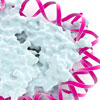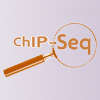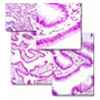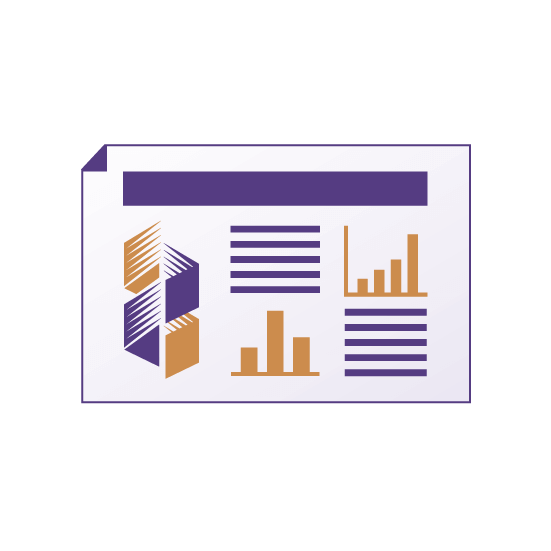<< Back to Resources Home Page
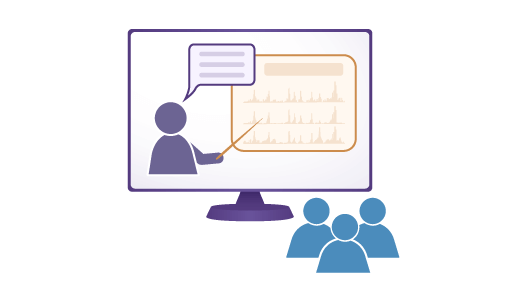
Epigenetics Webinars from Active Motif
Stay up-to-date with the latest tips & techniques from epigenetics experts.
Introduction to CUT&RUN
In this webinar, Brad Townsley, Sr. Scientist – R&D at Active Motif introduces the concepts behind CUT&RUN assay, how the technique works, and why you might want to try it in your own research project.
Recent Technology Advances in Epigenomic Profiling
In this webinar, Sarah Traynor, Research Scientist at Active Motif compares the popular epigenomic profiling techniques ChIP-Seq, CUT&RUN and CUT&Tag, plus discusses how to select the best one for your research project.
KRAS In-Well Lysis ELISA Kit
In this webinar, Dr. Michelle Carlson, Product Manager at Active Motif talks about the development of our recently launched KRAS In-Well Lysis ELISA kit, and how it can enable KRAS research and drug discovery efforts.
Genome-wide Mapping of Protein-DNA Interaction Dynamics
In this webinar from the All-Ireland Chromatin Consortium (AICC), Dr. Steven Henikoff, Professor at the Fred Hutchinson Cancer Center covers scientific advances that allow us to better investigate the interactions of proteins and DNA, then map them at a genome-wide scale.
Chromatin-Con 2023: Epigenetics of Aging Meeting - Videos
Catch up on presentations from the Chromatin-Con 2023: Epigenetics Mechanisms – Impact on Aging and Disease Meeting in January of 2023. This was a 3-day, online event featuring talks from international experts focusing on the emerging research into the relationship between epigenetic mechanisms on aging and related disease states, with the goal to share information and foster interactions between scientists from around the globe.
Introduction to R for Biologists
In this webinar, Drs. Torryn Poolman, Lecturer at University College London, and Nick Pervolarakis, Computational Biologist at Active Motif will take us through some basic functions of R that will be useful to all life scientists.
PIXUL Multi-Sample Sonicator - Sample Preparation for Multiomics
In this webinar, Dr. Rwik Sen, Field Application Scientist at Active Motif demonstrates how the PIXUL Multi-Sample Sonicator can be applied to generate fast, consistent, and high-throughput, sample preparation for use in multiomics research.
Interacting with Data on the UCSC Genome Browser
In this webinar, Dr. Nick Pervolarakis, Computational Biologist at Active Motif provides a quick tutorial on how to use the UCSC Genome Browser to upload, analyze and view biological data sets for genomic bioinformatic analysis.
Analysis of Single Cell Multiome ATAC + Gene Expression
In this webinar, Dr. Wayne Doyle, Bioinformatics Manager at Active Motif discusses the benefits of single cell, and multiomic analysis, how we utilize the 10X Genomics Multiome Kit technology, and why this approach is so powerful for genomics research.
Anchor-Based Bisulfite Sequencing (ABBS) Determines Genome-wide DNA Methylation
In this webinar, Dr. Benjamin Delatte, Group Leader, Advanced Research Lab at Active Motif discusses a newly developed and published technique, Anchor-Based Bisulfite Sequencing (ABBS) and the advantages it has for measuring DNA methylation on a genome-wide scale in comparison to traditional bisulfite based approaches.
Novel Translational CUT&Tag Assays
In this webinar, Dr. Michael Garbati, Product Manager - Epigenetic Services at Active Motif discusses the latest innovative, and novel variations of the CUT&Tag technique that now allows for translational research to be conducted on clinically relevant samples.
Chromatin-Con: 2021 Epigenetic Mechanisms & Human Disease Meeting - Videos
Catch up on presentations from the first ever Chromatin-Con: Epigenetics & Human Disease Meeting 2021. Watch talks from international experts and their emerging research in the relationship between epigenetic mechanisms and human disease. The conference is structured into four sessions - two featuring speakers based in Europe, and two from speakers based in North America.
Improved Chromatin Analysis with CUT&Tag Assays
In this webinar, Dr. Michael Garbati, Product Manager - Epigenetic Services at Active Motif talks about how the process of investigating chromatin has greatly improved with the recent innovation of techniques like CUT&RUN and CUT&Tag, which are faster and easier than traditional ChIP methods.
Utilizing Single-cell Workflows for Clinical Multiomics Analysis
In this webinar, Dr. Rupesh Kanchi Ravi, Director of Epigenetic Services at Active Motif, discusses how newly developed single-cell workflows, such as scATAC-Seq, and scRNA-Seq can be combined to create multiomic analysis of clinical samples, representing a major advancement from previous bulk analysis approaches.
CUT&Tag vs ChIP-seq – From Data Generation to Analysis
In this free webinar, Dr. Sarantis Chlamydas, Ph.D., Senior Market Development Manager at Active Motif, and Amit Sinha, Ph.D., CEO of Basepair Tech discuss the best ways to generate quality data using advanced, epigenomics techniques including CUT&Tag and ChIP-Seq, and then efficiently process and interpret epigenomic data using streamlined analysis pipelines.
Cardio Epigenetics Chromatin Meeting
The 1st edition of the Cardio Epigenetics Chromatin Meeting is an online event that focuses on the emerging research into the relationship between epigenetic mechanisms and cardiovascular disease.
Bridging ChIP-Seq and Translational Research with PIXUL® Sonication
In this free webinar, Dr. Joshua Messinger, Ph.D., R&D Scientist at Active Motif, describes how innovative PIXUL® sonication technology fuels techniques allowing epigenetic analysis to be conducted on clinical samples - something which was previously very difficult to accomplish.
ATAC-Seq: Mapping Open Chromatin
ATAC-Seq is a powerful technique that enables the mapping of accessible, or open, chromatin regions across the genome. The ATAC-Seq assay has been used by many researchers to investigate the role of epigenetics in many biological processes and disease states. This webinar covers the ATAC-Seq method in depth and discusses how it can be applied to epigenetics research.
Intro to ChIP-Seq Bioinformatics Pipelines
The large amount of complex data generated by ChIP-Seq experiments makes bioinformatics analysis pipelines critical for successful ChIP-Seq projects. This webinar discusses some of the most popular bioinformatics tools and approaches to analyze ChIP-Seq data and provides an introduction to help you learn how to analyze ChIP-Seq data.
Understanding Single-Cell ATAC-Seq and its Applications
ATAC-Seq and Single-Cell ATAC-Seq (scATAC-Seq) are powerful tools for investigating the epigenetic mechanisms responsible for regulating a particular cellular response or that contribute to a disease state. This webinar will explain how these popular techniques work and discuss how they can be useful in epigenetics research.
Ensuring ChIP-Seq Success
Chromatin immunoprecipitation followed by next-generation sequencing (ChIP-Seq) is one of the most commonly used tools in epigenetics research. This webinar will discuss approaches to the technique of ChIP-Seq to help ensure a successful experiment.
Tools to Study the Epigenetics of Aging
As scientists continue to learn more about the biology of aging, the role of epigenetics in regulating the aging process has become evident. In this webinar, Dr. Sarantis Chlamydas, Ph.D., Epigenetics Expert at Active Motif, discusses the epigenetic mechanisms involved in aging and highlights the available tools and strategies for studying these mechanisms.
Bringing Epigenetic Analysis into the Clinic
Epigenetic techniques have typically been difficult to use in a clinical setting. In this free webinar, Dr. Joshua Messinger, Ph.D., R&D Scientist at Active Motif discusses innovative approaches that have been developed to enable epigenetic analysis to be applied using clinical samples.
Epigenetic Tools for Blood Cancer Research
Epigenetic tools and techniques provide a valuable avenue to understanding the underlying mechanisms of disease. In this webinar, Dr. Michael Garbati, Ph.D., Technical Support Scientist at Active Motif, discusses how epigenetic methods can be applied to study specific disease states, using the specific example of blood cancers including chronic lymphocytic leukemia (CLL).
Advances in Chromatin and DNA Shearing
Achieving proper sonication of chromatin and DNA, from a wide array of sample types, is critical for the success of several of today’s most popular lab techniques. Limitations in traditional shearing approaches can lead to experimental failures and inconsistent results. Therefore, Active Motif has developed a new instrument to address those issues.
In this webinar, Dr. Rwik Sen, Ph.D., Field Applications Scientist at Active Motif, discusses how the PIXUL® Multi-Sample Sonicator addresses many of the issues around chromatin and DNA shearing.
The Epigenetics of the Exposome and Aging
Aging results in a gradual and progressive loss of physiological functions and physical abilities over time. Overcoming the growing burden of age-related issues is one of the greatest challenges facing modern society. These issues are leading to a major drain on healthcare resources worldwide, so a better understanding of the biology of aging is critically important.
In this webinar, Dr. Paul Shiels, Ph.D., Professor of Epigenetics at the University of Glasgow, discusses how our behavior and the environment impact health and aging at the molecular level.
Multiplex Profiling of Epigenetic Modifications – Measuring Assay Specific & Off-target Effects in the Same Sample
Traditionally, Histone PTM levels are measured by western blots or ELISAs, but these methods require large amounts of material and can only examine one histone modification at a time.
In this webinar, Mary Anne Jelinek Ph.D., Senior Research Scientist at Active Motif will discuss our Histone H3 PTM Multiplex Assay and its advantages over traditional western blotting.
Advances in ChIP-Based Technologies for Profiling Epigenomic Landscapes and Gene Regulatory Networks
Although ChIP-Seq has contributed greatly to our understanding of the epigenome and gene regulation, it is not without its limitations, which can impede our ability to answer complex scientific questions.
In this webinar, Adam Blattler Ph.D., Research Scientist at Active Motif, will discuss the variety of tools and services we have developed to overcome many of these challenges.
Precision Mapping: High-Resolution Mapping of Transcription Factor Binding Sites Using ChIP-Exo
Mutations that lead to changes in gene expression are common in many human diseases. Therefore, a thorough understanding of the mechanisms regulating or mis-regulating gene expression is crucial to understanding disease initiation and progression. ChIP-Seq is the predominant method used to analyze DNA-protein interactions, but it can have limited resolution in identifying a transcription factor binding site.
In this webinar, Bryce Alves, Ph.D., Research Scientist at Active Motif will discuss ChIP-Exo, a powerful technique for high-resolution mapping of transcription factor binding sites.
Advanced ChIP-Seq Normalization & Data Analysis Strategies
An ongoing problem in ChIP-Seq data analysis is the often large discrepancy between expected changes in histone marks and the actual ChIP-Seq data when using drug-treated cells.
In this webinar, Brian Egan, Ph.D., Epigenetic Services Manager at Active Motif, discusses a novel ChIP-Seq spike-in normalization strategy and shows how normalization of ChIP-Seq data using this approach reveals the expected changes in the final ChIP-Seq data set for inhibitor-treated samples.
Getting Reliable ChIP Data from Difficult Samples
Chromatin Immunoprecipitation (ChIP) is a powerful tool for studying protein-DNA interactions, but it can be technically challenging. To date, ChIP studies have been mainly limited to cultured cells and model systems.
In this webinar, Johanna Samuelsson, Ph.D., Sr. Research Scientist at Active Motif, discusses the pitfalls & challenges of generating high-quality ChIP data from difficult-to-ChIP samples, including primary cells, FFPE samples, and PBMCs.




















